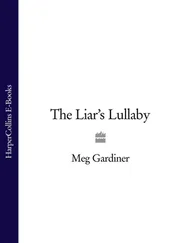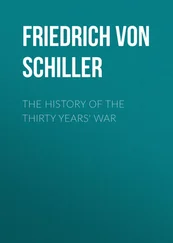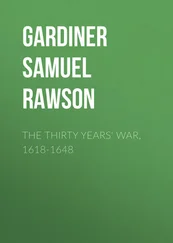Those wayward Medical Officers of Health or investigators who declared otherwise were considered guilty of perpetrating socialist ‘stunts’. Dr M’Gonigle, the Medical Officer of Health for Stockton-on-Tees, was threatened with removal from the medical register for misconduct if he participated in a broadcast on the problem of malnutrition, while Sir John Boyd Orr was summoned by the Minister of Health, Kingsley Wood, who ‘wanted to know why I was making such a fuss about poverty … when there was no poverty in this country. This extraordinary illusion was genuinely believed by Mr Wood who held the out-of-date opinion that if people were not actually dying of starvation there could be no food deficiency. He knew nothing about the results of the research on vitamin and protein requirements, and had never visited the slums to see things for himself.’ Despite the government’s suppression of Boyd Orr’s finding in the run-up to the 1935 general election, the Conservative MP and publisher Harold Macmillan, who had seen poverty and hunger up close in his own constituency of Stockton, agreed to publish Food, Health and Income in January 1936, thus ‘informing the public of what the true position was regarding undernourishment among their fellow citizens’ — half of their fellow citizens, Boyd Orr calculated in 1937.
Despite such government complacency — or wilful avoidance — there was a mounting body of evidence from independent investigators that by the 1930s the fall in rates of infant mortality (the number of deaths of children under one year of age), which had been declining impressively since the First World War, with the introduction of maternity and child welfare centres and health visitors, had slowed down considerably, so that England and Wales now ranked ninth in the League of Nations’ Table of Infant Mortality, while Scotland was seventeenth. Moreover, there were considerable discrepancies between different parts of the country, and even within small areas. In a comfortable part of Manchester, for example, the rate was forty-four per thousand live births, while in a poorer area it was 143 per thousand. Seventy-six out of every thousand infants died in Glamorgan and Durham, seventy-seven in Scotland, ninety-two in Sunderland and an appalling 114 in Jarrow, whereas in the Home Counties the rate was forty-two per thousand. It was the same with maternal mortality (the number of women’s deaths attributed to childbirth): in the North it was 4.36 per thousand, in Wales it was 5.17, whereas in the South-East it was 2.57. Mothers were simply dying in childbirth at a far greater rate in the depressed areas: poor nutrition during pregnancy meant that in the 1930s it was four times as dangerous to bear a child as it was to work down a coalmine. In addition, every five years perhaps a quarter of a million women were likely to suffer disabling and long-lasting ‘dull diseases’ caused or aggravated by repeated pregnancies and childbirths in adverse conditions. And the wives of unemployed men were not covered by their husbands’ health insurance.
Nutrition mattered desperately to the health of the nation — a point that would be taken very seriously at the end of the decade, when after the coming of the Second World War the Minister of Food, Lord Woolton, drew heavily on Boyd Orr’s estimates of the standard diet needed to maintain a healthy population — yet, as the leader of the NUWM, Wal Hannington, pointed out, ‘The kinds of food … necessary to provide the vitamins and calories which have been specified as the minimum requirements [recommended by the BMA] are not being eaten in the homes of the workless since they cannot afford to buy them.’ A pint of milk a day would cost 2s.½d a week, while the BMA scale prescribed 2s.8d as the total weekly food allowance for a child of one to two years, and 3 s .1 d for one aged two to three. Again using the BMA scale, a man eating three meals a day would have exactly 3¼d to spend on each meal, and a woman 2¾d. Furthermore, Hannington quoted the Chief Medical Officer to the Board of Health, Sir George Newman himself, who had estimated in his 1933 report that the milk a pregnant woman needed would cost 4 s .1 d a week, while the amount allowed for her total food consumption under unemployment benefit regulations was 4s.11d. ‘It would, indeed, be interesting,’ wrote Hannington, ‘to know how the Minister of Health would spend the odd ten pence on buying three meals a day for seven days a week.’
George Orwell quoted — in amazement — a newspaper article that suggested that by eating a diet composed mainly of vegetables and whole-meal bread, with cheese for protein, it was possible for an adult to have a balanced diet for 3 s .11 d a week. But the ‘minimum weekly expenditure on foodstuffs which must be incurred by families of varying size if health and working capacity are to be maintained’ recommended by the BMA worked out for a man, his wife and two children aged eleven and nine at 19 s .9 d a week, out of an unemployment allowance of £1.7s. Since the average weekly rent for three rooms in the East End of London was 12s.6d, and in Stockton-on-Tees the rent for one of the 2,756 new council houses was over nine shillings (which was beyond the reach of most of the unemployed, who continued to live in slum cottages where they paid nearer 4 s .8 d a week), it was hardly surprising that the Pilgrim Trust found that 44 per cent of the families of the unemployed would not be able to afford the minimum diet once they had paid their rent and allowed for other necessary expenditure. And Rowntree found that in 1933, 72 per cent of the unemployed in York were able to spend less on food than the BMA recommended, ‘due to lack of means’. This finding was borne out by Dr M’Gonigle in Stockton-on-Tees, who was convinced that the malnutrition he came across was caused by poverty, and not mismanagement, as was sometimes alleged.
‘I learned the meaning of hunger,’ wrote Max Cohen of his days as a single, unemployed cabinet-maker. ‘I knew what it was to count my pennies carefully and to spend them with hesitation and misgiving. I knew the dull finality of having no money at all.’ Cohen
came within the Labour Exchange category of a ‘Young Man’ (18–21 yrs). Therefore I was receiving fourteen shillings per week … apparently it was assumed by the authorities that a ‘Young Man’ … can in some mysterious way support himself on a smaller sum than a ‘Man’ (21–65 yrs) …
Life … became divided into more or less rigid periods … There was Friday … the day, when after feverish waiting at the Labour Exchange, I received the life-giving fourteen shillings. After paying six shillings and sixpence a week rent, I was able, with much care and discrimination, to exist in a more or less normal fashion during the first half of the week. Of course, I could spend nothing on replacing my clothes, or on minor luxuries of any kind, no matter how trifling.
From Tuesday on came bankruptcy … I had no money at all, and so, in a sense, nothing more to worry about … I lived on whatever may have been left of those things I had bought at the beginning of the week — on dry bread and bits of tasteless cheese. All that was necessary was to pull my belt tighter, ignore the empty ache in my stomach and hang on till Friday and deliverance came round again.
A London housepainter aged forty-seven, married with six children, three of them under six, found himself ‘unemployed and unable to fulfil my duties towards my family’. He had a weekly income (including a naval pension and the earnings of three of his children) of £4 s .11 d , which meant that
after allowing for rent, rates, light, coal and gas with a balance of £2.11s to keep, house, clothe two adults, one adolescent and three children, and provide all other necessaries of life for eight persons, which position a PAC inquisition described as ‘not in need of assistance’ … The chief article of our diet is bread. Margarine comes next, and it is my experience that children prefer this to dripping [from meat] … unless the dripping is made use of for frying bread when it often forms a breakfast meal when other food is not available. We invariably take sweetened condensed milk with our tea, a saving thereby being effected in the consumption of sugar; and we often use it for making rice puddings. We usually purchase fresh meat on Friday or Saturday evenings, cash being available on those days, and this being the time when butchers make an effort to sell their odds and ends. Fresh vegetables have been fairly cheap, and these together with cheap sausages, often form our principal meal on two or three days.
Читать дальше












